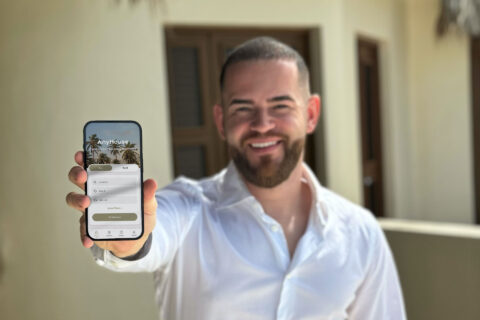I always think about building audience in terms of concentric circles. I think this is what TechCrunch did really well, that other blogs missed. Rather than trying to come out day one and do a lot of SEO tricks or sensational headlines to get a lot of traffic, you need to get the smartest and most important people in the ecosystem reading you everyday. Then the people who want to either work for them, invest in them, or get money from them, want to read whatever those people are reading. Then people in other ecosystems want to know what’s going on in the Valley and start reading it. It ripples out through these concentric circles.
Ultimately, PandoDaily is designed for a general business reader. A lot of the stuff that we write could easily run in a magazine like Fortune. We’ve never been as “insidery” as TechCrunch was, and we’ve never been particularly Valley-only either. We want to be people’s guide to this world.
Best Success Story
[pullquote align=”right”]”We felt if we could play a role in helping people get plugged in they’d be very loyal to our brand and our business.”[/pullquote]Our monthly events have been really fantastic. That was the thing that worked for us the quickest. It was also hard because it was a big challenge. While we felt pretty certain there was a hole in the market for a good tech blog, most people felt the market was really glutted with tech events. Most people were not clamouring for another tech event, particularly in San Francisco.
I felt people were very fatigued by the concept of a 3-day conference. I thought, “If you could break it apart and have it be something people could attend throughout the year, you could bring a lot more life into it … and people could enjoy it in chunks.”
Also, in the three ecosystems where we do events, we wanted to give people, who were just trying to get into tech, a place to go every month to get connected and learn something. There are a lot of people who are new to this ecosystem and it’s hard to get plugged in. We felt if we could play a role in helping people get plugged in they’d be very loyal to our brand and our business.
We did a couple of unique things:
- We kept the ticket prices really low. It’s only twenty dollars to come and you get pizza and beer. The event centers around one high-profile guest who’s either an investor or entrepreneur in that ecosystem. These are frequently people that attendees never get to see. Many of them are people that attendees would only get to see at a conference like All Things D, with a $6,000 ticket price. A developer or student isn’t going to be able to afford that.
- We keep the attendance numbers low. We keep it intimate. Depending on the city and the venue we have between a 150-400 person capacity. Around the 150 mark we’ve found that guests will stay and talk to people afterwards, which is a huge benefit.
- We created in-depth conversations. Another thing we did that a lot of people questioned at the time is that our events are really long. It seems like it wouldn’t work. But we create in-depth, Inside the Actor’s Studio-style interviews. It enables a totally different level of conversation and it lets people get a sense of who these people are; their challenges, struggles, what has driven them. In a typical stage interview, the moderator is just trying to get immediate news. Instead we deliver an evergreen feel and people feel they are very educational.
It was a counterintuitive model because we’re basically capping the normal ways you would make money, in terms of audience size, high-dollar ticket sales, etc. When you have a smaller audience, there is a limit on what you’re going to be able to sell in terms of sponsorship as well. But what we’ve found is that people love the events. They are very unique.
Biggest Startup Challenge
It’s such a boring answer because it’s what everybody says, but “It’s hiring good people.” I’ve interviewed so many startups over the years and I always roll my eyes at an answer like that, but it really is the biggest challenge.
Particularly reporters for us, because we want people who really want to cover tech and startups — and are good at doing it. But a lot of those people are bloggers. We wanted to hire reporters. And we wanted people who could do one to two really good pieces of journalism a day, versus rewriting six to nine press releases. Finding that talent in the market is really hard.
So our solution has been to discover talent that is either working in other verticals of journalism, people who weren’t journalists before, or young people and help develop, mentor and train them. A lot of our time and business model is around developing talent.
We think this is going to be a huge competitive advantage going forward because if you help develop talent and help get people get to the next level they are really loyal to you. It also makes us an aspirational place to work.
It’s also a hard place to work and it’s not a job for everybody because we demand that people continue to get better. We demand that they work hard. Whenever we’re really hammering on a reporter I always say, “You may hate us right now, but in a couple of months your writing and reporting is going to be at such a different level — you’re going to love us!”
The people who stick with us, and who do show improvement, have become huge names in the industry. Those who don’t want to work that hard are weeded out pretty quickly.
© YFS Magazine. All Rights Reserved. Copying prohibited. All material is protected by U.S. and international copyright laws. Unauthorized reproduction or distribution of this material is prohibited. Sharing of this material under Attribution-NonCommercial-NoDerivatives 4.0 International terms, listed here, is permitted.
We eat, sleep and breathe entrepreneurship. We're behind YFS Magazine's fresh content -- one of the largest independent small business news sites. Young, Fabulous & Self-Employed has quickly become the definitive digital resource for startup, small business news and entrepreneurial culture. Join us on Twitter @yfsmagazine and Facebook.
Show More










